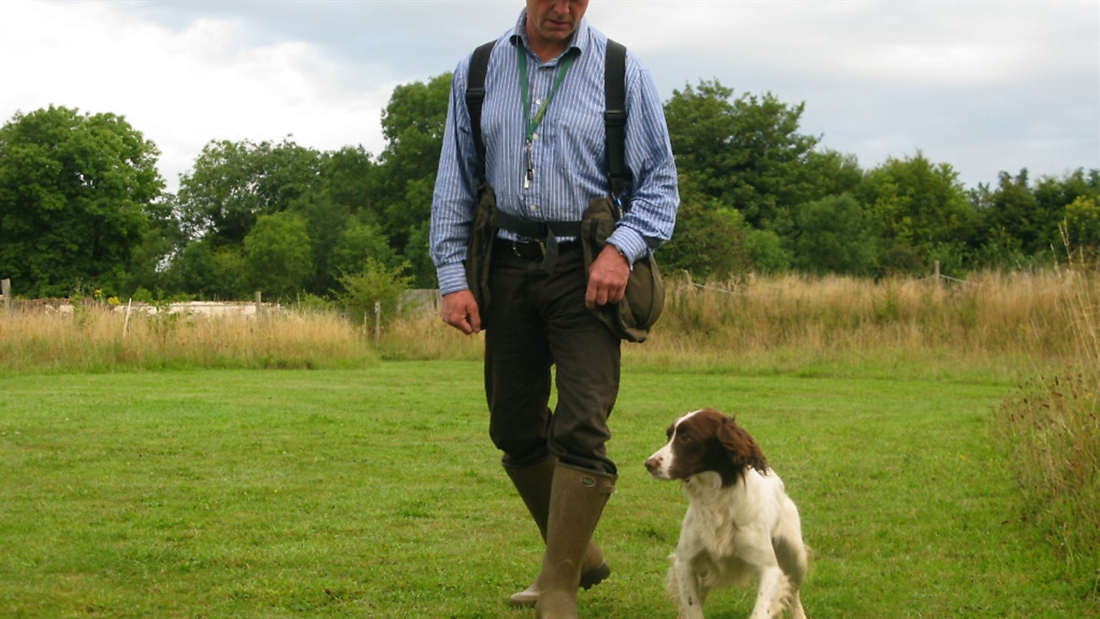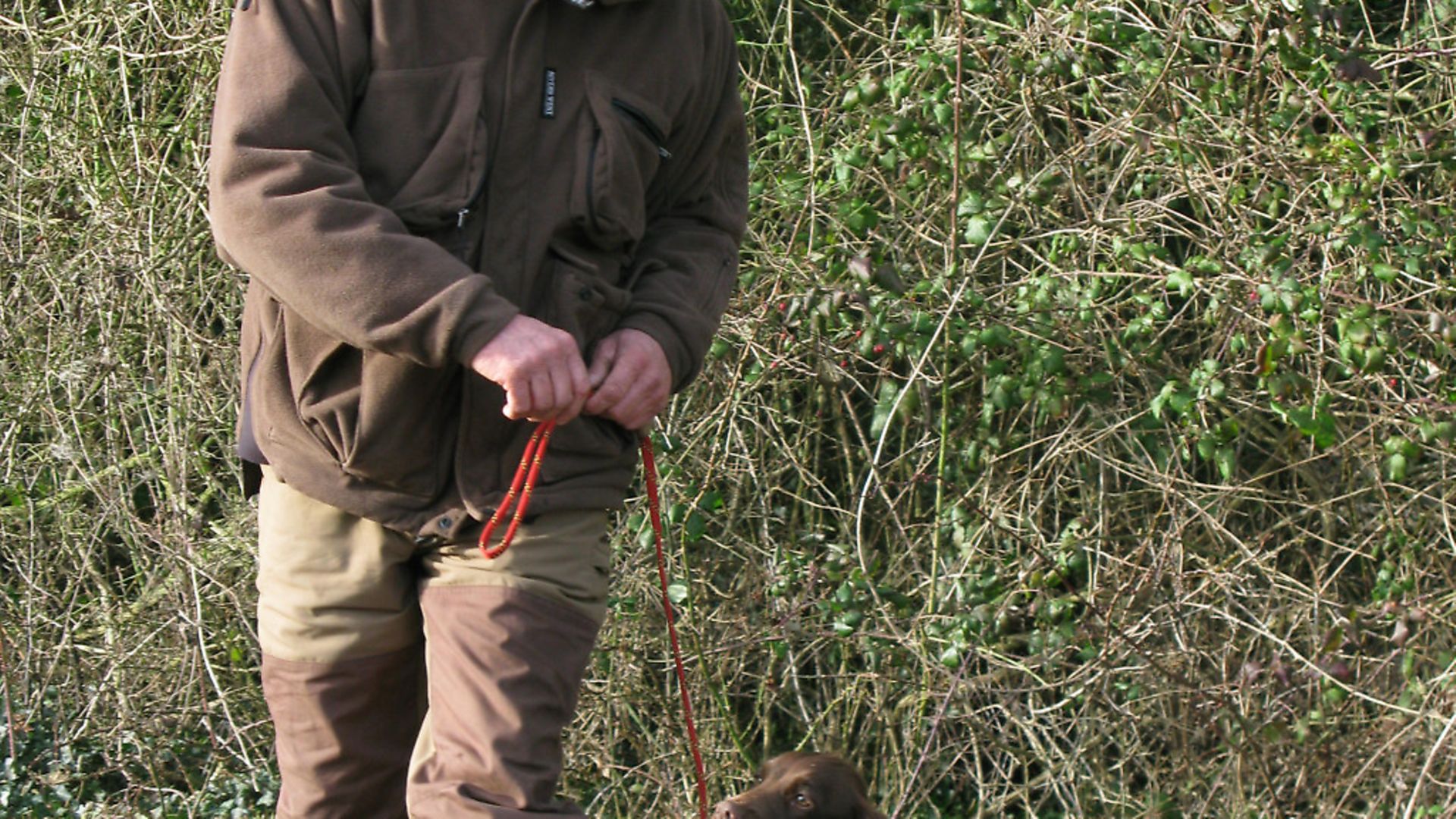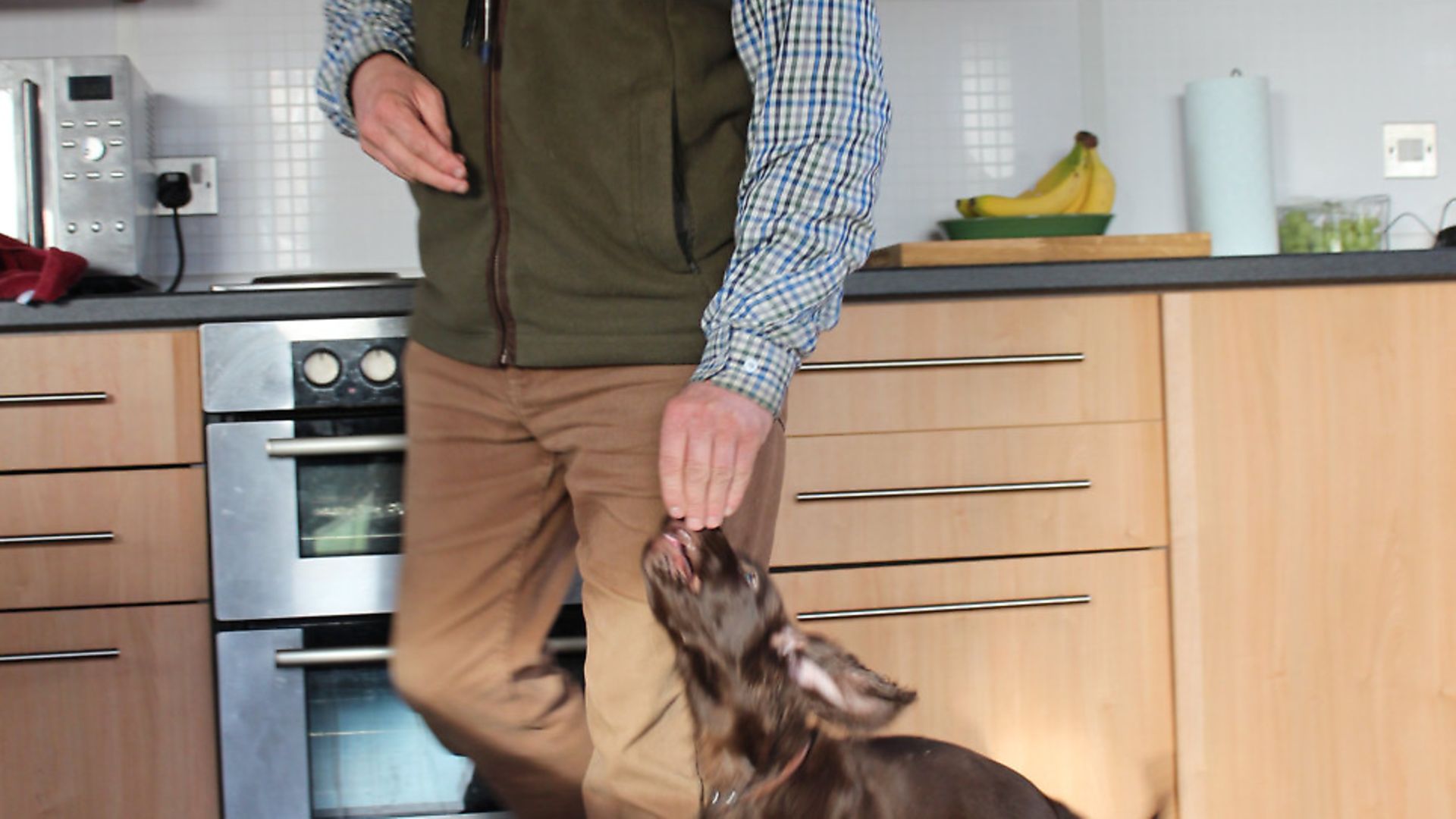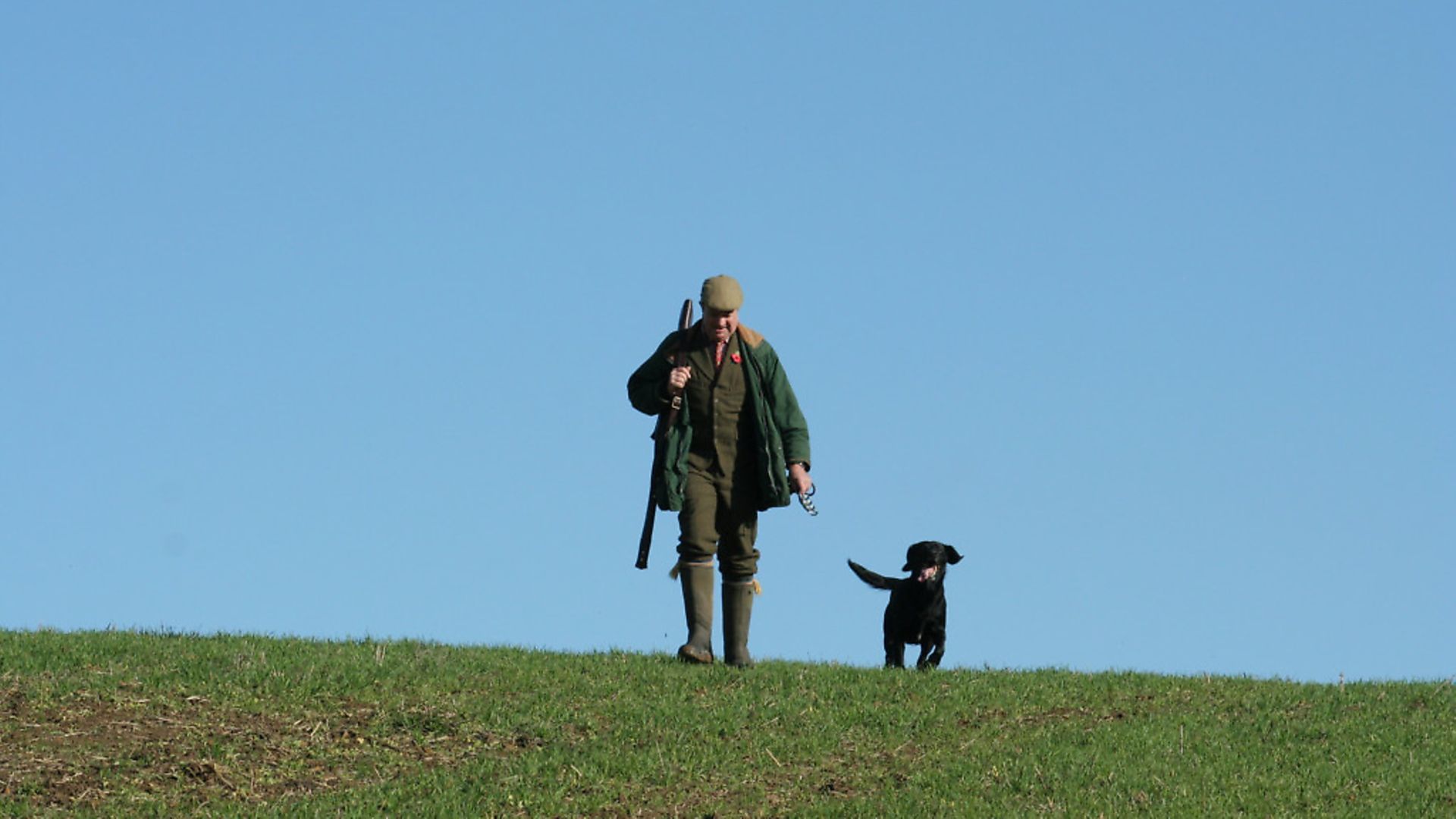How to: stop your dog pulling on the lead

Want to know how to stop your dog pulling on the lead? Then read on for gundog trainer Howard Kirby’s simple trick!
As promised, and following on from last month’s article, I’m going to continue developing my thoughts on heelwork. Just to recap and probably stating the obvious, there are many benefits to teaching our dogs to walk off lead and at our side.
Out in the shooting field, a dog that is required to be on a lead is mostly inconvenient. Beaters need their hands free to carry ‘driving sticks’ and flags, added to which a dog on a lead will get tangled up and be difficult to manage. Guns need to be hands-free for guns and cartridges and those of us that are lucky enough to go picking-up clearly need one arm to lean on our 4X4s and the other to hold our coffee mugs. All very important stuff.
Last time, we talked about teaching a dog to walk at heel using food as a reward. This ongoing technique is reliant on the dog seeing the food as being extremely valuable and accessible. Ensuring that the environment that you are training in is not more distracting and exciting than the food you are offering is crucial to the success of this technique. This, of course, is where the problems start. As soon as your dog gets distracted and fixes its focus on something that it deems to be more rewarding than the food that’s on offer, it’s likely that the distraction will win.
So here begins a debate that is a real ‘hot potato’. If you came from the camp that says ‘all dog training should be solely about reward-based training and that no corrections should be given’ I believe you have a very valid point and have sympathy with your thoughts – particularly when arguing that the reason for the dog being distracted is because the trainer has not done enough training, conditioning and subsequently proving the walking at heel behaviour before challenging the dog with a more difficult environment!
In a nutshell, the better we are at establishing a behaviour via a reward-based system, the less need for correction there will be. In an understandable rush to socialise young puppies, owners are encouraged to attach a puppy to a lead and charge off to the park. If you stand and observe this event, you will see that right from the ‘get go’ the puppy is learning to pull whenever it’s hooked up to a lead.
Last month, we looked at using feed treats with the additional option to use target work to enhance your training plan. As discussed above, the more work you put into this, the better your puppy will be at heelwork. Remember that the puppy is following the food treat. Our aim is to encourage it to follow you. Make a checklist in your mind as to why a puppy or person might be interested in following you. Don’t bank on your ‘Amazing Personality’ – as lovely as you are, it’s possible the puppy will follow you out of idle curiosity, but this will be short lived.
Changing direction
Carefully managed food, energy, vocal enthusiasm, and of course your amazing personality will lure the puppy into your side. Second only to the food will be the need for you to make rapid changes of direction. This keeps the puppy guessing but more importantly is a training plan to co-ordinate your feet, legs and hands with your body and mind. This element of dog training is a practical skill and I have seen lots of ‘academic canine experts’ pick up the lead and not be able to train one side of a dog. Harsh, I know, but true.
So why am I making such a big deal about changing direction? The change of direction will serve to keep the handler moving and, to be clear, it’s the keeping moving that’s really important here. The most common mistake that a trainee handler makes at this point is that they are drawn into being led by the dog. If the dog stops, or slows, the handler reacts by turning back towards the dog. This instantly serves to send their energy in the wrong direction. What’s essential is to get the handler to focus not on the dog but in keeping themselves moving forward. This one exercise can tell you more about the handler, their character and relationship to the dog in 30 seconds than some long-winded character report. I have some really funny stories relating to this exercise but due to client confidentiality these will have to remain inside my head.
It’s not uncommon for me to be stood on the side of the training field barking like some ‘drill sergeant’ to force a terrified handler into continuous and rapid changes of direction, delivered with regular changes of pace (just occasionally the power goes to my head!).
At the start of this article, I touched on the ‘hot potato’ that is correction. And a couple of paragraphs earlier mentioned that the changing of direction stuff is there to build the handler’s practical skill set.
The sharp ones among you will have noticed that there has been no mention of using a lead up to this point. This has been deliberate because training a young puppy without the lead will require you to be at the top of your game.
Let’s just reiterate what you will need. One, an appropriate and benign classroom, initially indoors before graduating outside. That means a quiet back garden – not some communal park that’s full of dogs, pigeons, squirrels, bicycles and men clad in lycra.
You will also need a dog that is really hungry and keen to get at your food rewards plus all of the changes in direction, stops, sits, stays and recalls that you can jam into a two-minute training session. If you get all of this right, the pair of you will be ‘tripping’ around your back lawn like some super-coordinated Strictly Come Dancing partnership. It works, it really does! If it doesn’t, you have one or some of the component parts missing.
Ramping it up!
Once you have got your young dog to perform heelwork to a high standard in your garden, the time comes when you are ready to venture out the front gate and layer up the level of distraction. Crucial to success here is that the level of training is not exceeded by the level of distraction.
Although on paper this might sound straightforward, you will quickly discover that keeping the puppy focused on a feed treat in a new environment can be extremely difficult. And this is where the lead can suddenly come into its own. Like any tool, it’s only ever as good as the craftsman on the end of it.
You will need to fit a lead at this point – if for no other reason than to guarantee safety. An absolute essential from the first time you fit the lead is to ensure that a youngster doesn’t feel any resistance or tension on the lead. The puppy or dog must not be allowed or learn to pull. We need to avoid getting into a situation where we evoke an equal and opposite reaction. Walking to the training field or park is almost certain to provoke and encourage lead pulling. And so the decline begins. Argggggghhhh!
If the puppy is small, carry him out the front gate or use your reward skills to prevent any pulling. With an older, established puller, you’ll need to employ techniques that totally avoid anything other than a momentary contact with the end of the lead. A rapid about turn through 180° and rush away in the other direction will bring about a sharp tug on the lead. This will serve to break the dog’s mindset and most importantly change their direction. The fact that you are now rushing away in the opposite direction will also serve to instruct the dog as to what he needs to do now.
Encourage the dog to draw itself up into the heel position where you can greet him with a food reward. Throughout this process, you will be constantly moving with purpose and power. Periodically bring the dog into a well-engineered ‘sit’ using food. This allows you to draw breath and prepare for the next movement. Each and every time you set off, turn sharply into the dog. And away we go again. All of those practical skills that you have been using in the garden will now come into play.
Consistency and competency will be required each and every time you connect the dog to the lead. Fifty percent of my working week is taken up helping owners to reshape dogs that have been taught to pull on a lead by their owners. Time, patience, study and well-planned dog training will help you to avoid this. Have fun and Keeeep Training!








